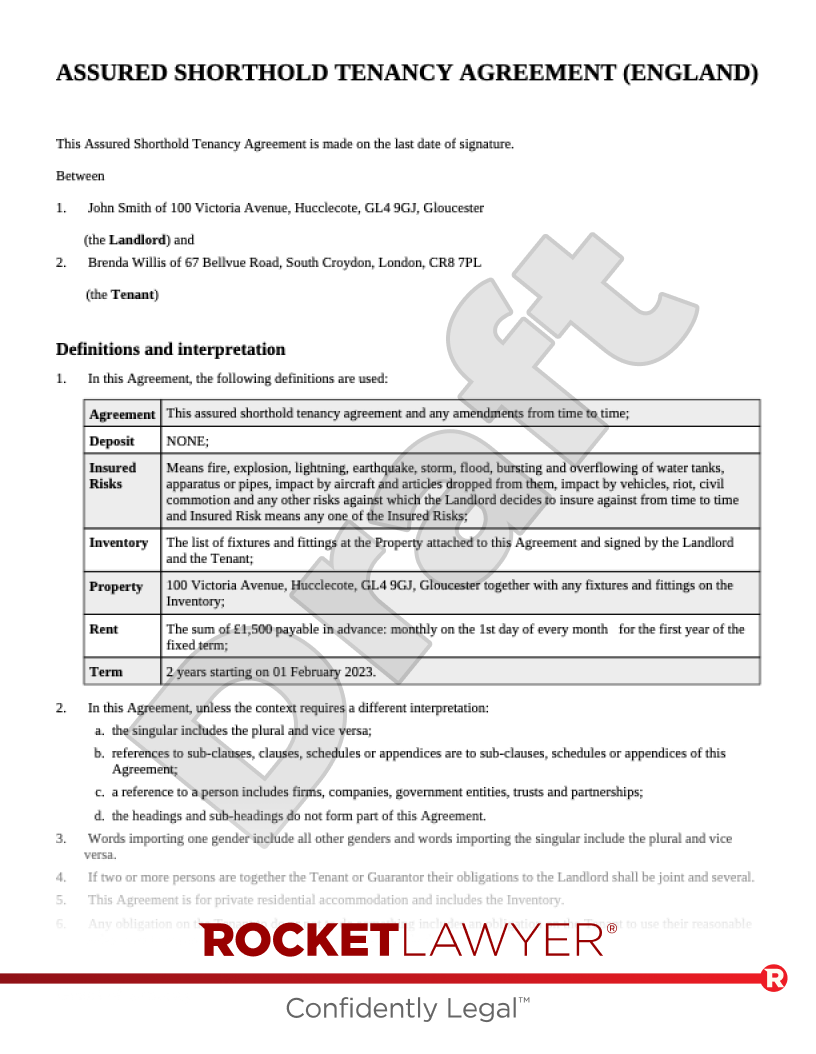What is section 213?
Section 213 of the Housing Act 2004 sets out the requirements for landlords relating to tenancy deposits. As well as protecting the deposit in a TDP scheme, landlords must provide certain 'prescribed information' set out in section 213(5), which includes details of the TDP scheme and what happens if there is a dispute at the end of the tenancy. This information must be provided to both the tenant and any relevant third parties who have paid part or all of the deposit (eg parents). Providing this prescribed information (as set out in the Housing (Tenancy Deposits) (Prescribed Information) Order 2007) is sometimes known as 'serving a Section 213 Notice'.
What does section 213 mean for tenants and landlords?
- Tenants' deposits must be protected in a Government-approved scheme within 30 days of receipt.
- Landlords must provide tenants with prescribed information and other documentation about the scheme within 30 days of receiving the deposit.
- Neither the landlord nor the tenant can access the deposit until both parties have agreed to any deductions (eg to cover unpaid rent or damage to the property by the tenant).
- In the case of a dispute over the deposit, the TDP schemes offer a free dispute resolution service.
What is the process for protecting a tenant's deposit?
Landlords (or lettings agents) must put the tenant's deposit in one of the following Government-backed TDP schemes within 30 days of receiving it:
These schemes protect the deposit and help to resolve any disputes. Landlords must return deposits within 10 days of both parties agreeing on any deductions at the end of the tenancy. For further information, read Deposit protection schemes.
What documentation needs to be provided to the tenant and relevant third parties?
A copy of the deposit protection certificate or receipt and the deposit protection scheme leaflet for tenants need to be provided. Some prescribed information which should be given also include:
- address of the rented property
- amount of deposit paid
- name and contact details of the tenancy deposit protection scheme and its dispute resolution service
- name and contact details of landlord or lettings agency
- contact details of any third parties who have paid the deposit (or part of it)
- conditions under which some or all of the deposit may be retained by the landlord
- how the tenant can apply to get their deposit back
- what the tenant can do if they cannot get hold of the landlord at the end of the tenancy
- steps to take in case of a dispute over the deposit
Who are relevant third parties?
Guarantors (such as parents or guardians) are also entitled to information on the TDS. If the guarantor pays the deposit, they should also be sent the prescribed information as they are a 'relevant person' for the purposes of the Housing Act 2004. If they pay the deposit and aren’t served with the prescribed information, then there is a potential penalty claim against the landlord.
What happens if landlords don't comply with section 213?
If landlords fail to protect tenant deposits or do not provide the prescribed information, they can be ordered by a court to repay the deposit to the tenant or pay it into a TDP scheme's bank account within 14 days. Additionally, they can be fined up to three times the amount of the deposit.
Furthermore, landlords who have not placed a deposit into a TDP scheme within 30 days of receiving it, or who have not provided the prescribed information, are unable to evict a tenant using a No-fault eviction notice (eg a Section 21 (form 6A) notice for England) until the deposit has been paid back to the tenant and the prescribed information has been provided.




